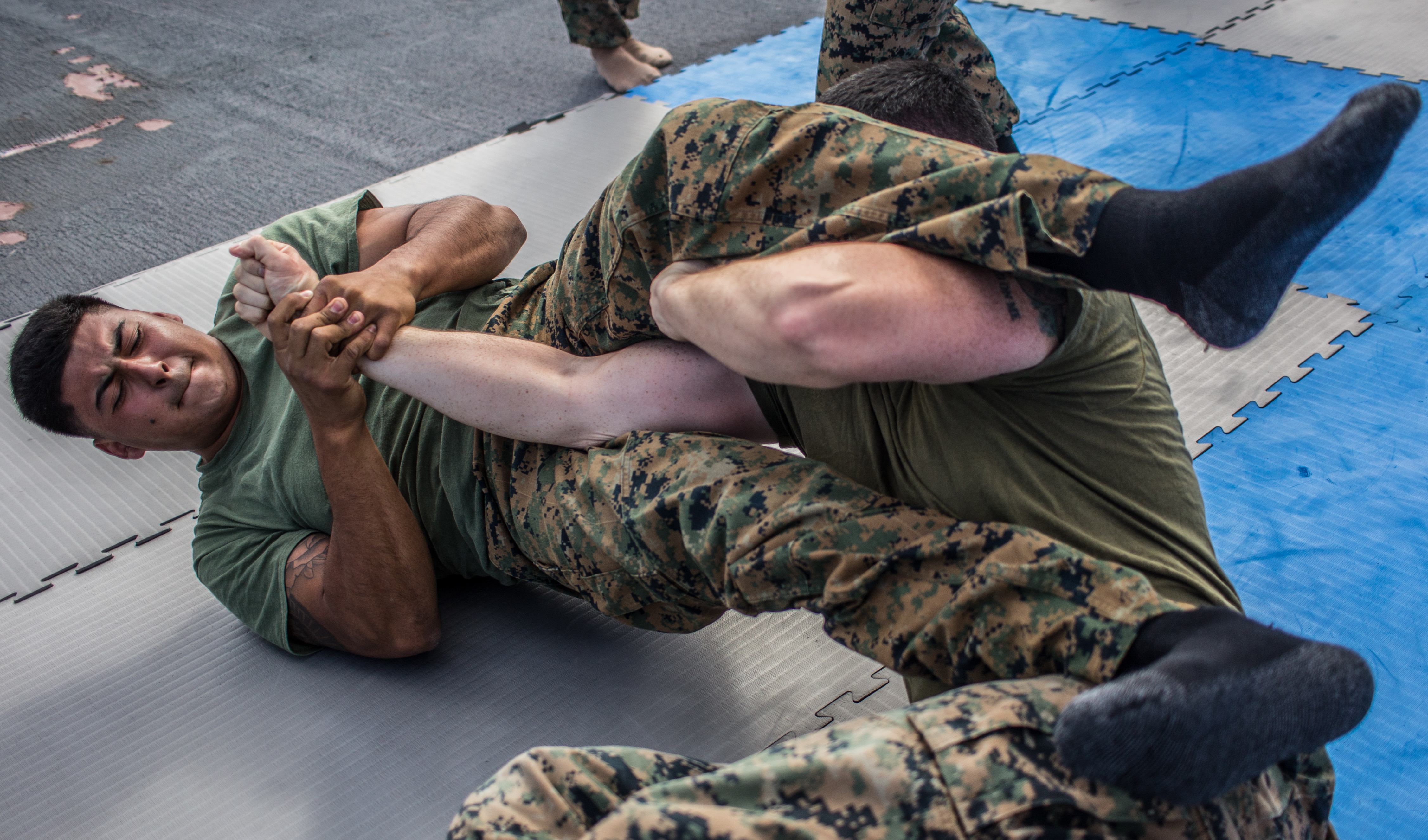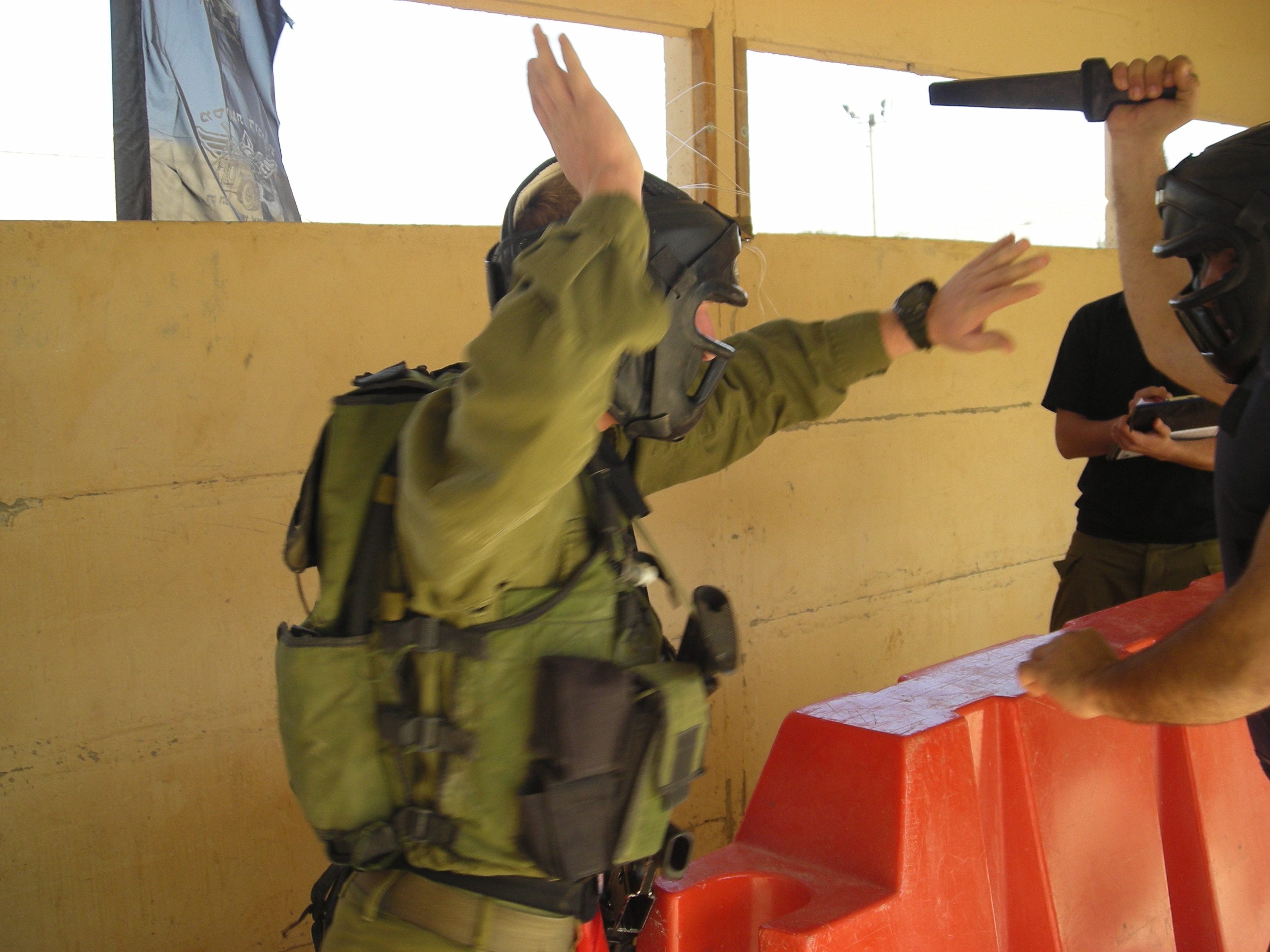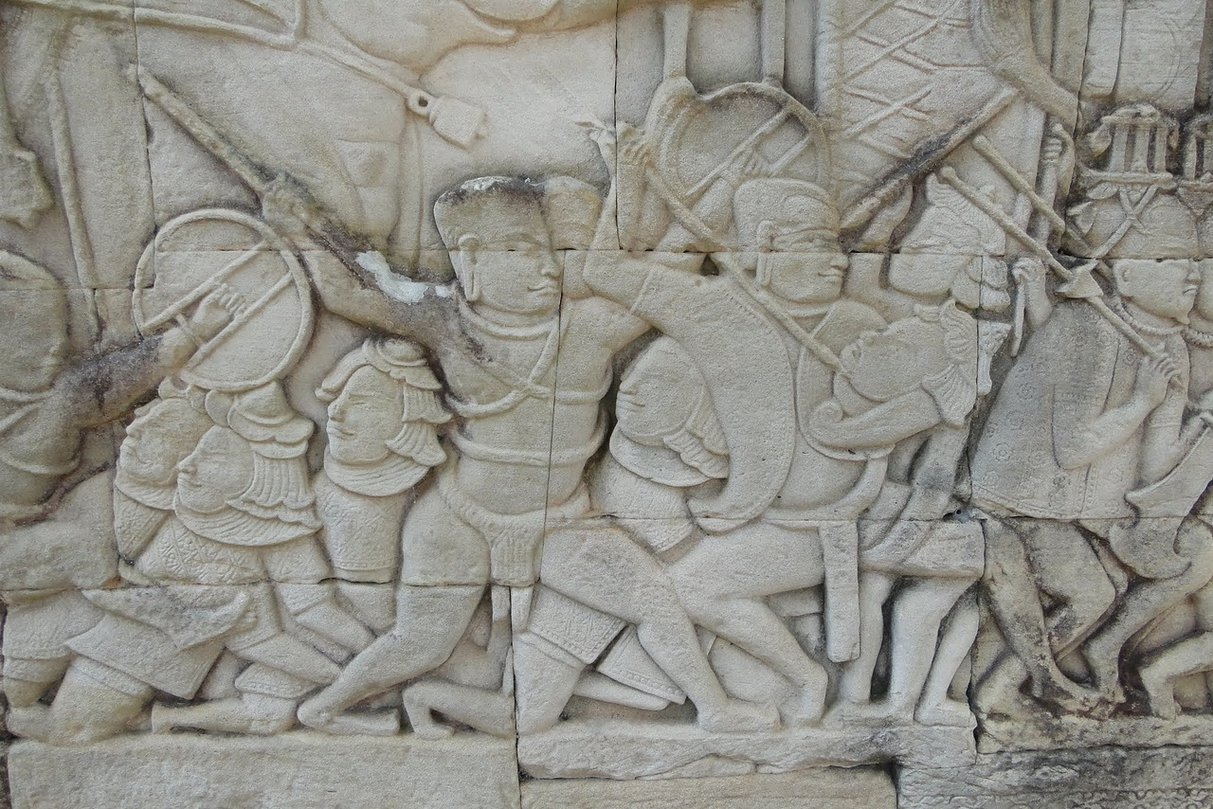|
Fingerlock
Small joint manipulation, in grappling, refers to twisting, pulling or bending fingers, toes, wrists and ankles to cause joint locks in the various joints in those appendages. Technique Most small joint manipulation is done on the hands or feet to hyperextend joints as part of a pain compliance strategy. The basic techniques of small-joint manipulation involve grabbing and bending back one or more fingers/toes and by applying pressure to the wrist/ankle joints that disrupt the interconnectivity of the system of smaller joints within. If pain compliance does not work, such hyperextension can tear tendons in the wrist or break the smaller bones in the hands and feet. The leverage needed for such joint manipulation is comparatively small and creates a distinct advantage over techniques in martial arts that require the exertion of large amounts of force, thus small joint manipulation can allow a weaker person, with the right training, to control a stronger one. Small joint man ... [...More Info...] [...Related Items...] OR: [Wikipedia] [Google] [Baidu] |
Wristlock
A wristlock is a joint lock primarily affecting the wrist-joint and, in some cases, the Distal radioulnar articulation, radioulnar joints through rotation of the hand. A wristlock is typically applied by grabbing the opponent's hand, and bending and/or twisting it. Wristlocks are very common in martial arts such as aikido, hapkido and jujutsu where they are featured as self-defense techniques. They are also used as grappling hold#Submission hold, submission holds in martial arts such as Brazilian jiu-jitsu (where the most common name is ''mão de vaca'', "the cow's hand") and catch wrestling. While being an illegal technique in modern sambo (martial art), sambo and judo competitions, it is still practiced in judo forms of self-defense kata Kodokan Goshin Jutsu, kōdōkan goshinjutsu. Wristlocks are also widely used as grappling hold#Pain compliance hold, pain compliance holds, often in police, military, and residential treatment centers. The wristlock is a technique that can be appl ... [...More Info...] [...Related Items...] OR: [Wikipedia] [Google] [Baidu] |
Joint-lock
A joint lock is a grappling technique involving manipulation of an opponent's joints in such a way that the joints reach their maximal degree of motion and hyperextension. In judō these are referred to as, 関節技 ''kansetsu-waza'', "joint locking technique"Ohlenkamp, NeilClassification of Techniques in Kodokan Judo ''judoinfo.com''. Accessed February 26, 2006.) and in Chinese martial arts as ''chin na'', which literally means "catching and locking". In Korea these are referred to as 관절기(gwan-jerl-gi, joint skill) or 관절꺾기(gwan-jerl-kerk-gi, joint breaking). Joint locks typically involve isolating a particular joint, levering it in an attempt to force the joint to move past its normal range of motion. Joint locks generate varying degrees of pain in the joints and, if applied forcefully and/or suddenly, may cause injury, such as muscle, tendon and ligament damage and even dislocation or bone fracture. In judo, the combining of standing locks with throws is forbidd ... [...More Info...] [...Related Items...] OR: [Wikipedia] [Google] [Baidu] |
Self-defense
Self-defense (self-defence primarily in Commonwealth English) is a countermeasure that involves defending the health and well-being of oneself from harm. The use of the right of self-defense as a legal justification for the use of force in times of danger is available in many jurisdictions. Physical Physical self-defense is the use of physical force to counter an immediate threat of violence. Such force can be either armed or unarmed. In either case, the chances of success depend on various parameters, related to the severity of the threat on one hand, but also on the mental and physical preparedness of the defender. Unarmed Many styles of martial arts are practiced for self-defense or include self-defense techniques. Some styles train primarily for self-defense, while other combat sports can be effectively applied for self-defense. Some martial arts train how to escape from a knife or gun situation or how to break away from a punch, while others train how to attack. To ... [...More Info...] [...Related Items...] OR: [Wikipedia] [Google] [Baidu] |
Spinal Lock
In combat sports, a spinal lock is a multiple joint lock applied to the spinal column, which is performed by forcing the spine beyond its normal ranges of motion. This is typically done by bending or twisting the head or upper body into abnormal positions. Commonly, spinal locks might strain the spinal musculature or result in a mild spinal sprain, while a forcefully and/or suddenly applied spinal lock may cause severe ligament damage or damage to the vertebrae, and possibly result in serious spinal cord injury, stroke, or death. Spinal locks and cervical locks are forbidden in IBJJF Brazilian jiu-jitsu competitions, amateur mixed martial artas (MMA), multiple forms of no Gi jiu-jitsu, judo, and other martial arts. However, professional MMA and some Brazilian jiu-jitsu competitions do permit spinal locks and, particularly, neck cranks, and such moves are trained in various MMA and Brazilian jiu-jitsu schools. Spinal locks can be separated into two categories based on their primary ... [...More Info...] [...Related Items...] OR: [Wikipedia] [Google] [Baidu] |
Leglock
A leglock is a joint lock that is directed at joints of the leg such as the ankle, knee or hip joint. A leglock which is directed at joints in the foot, is sometimes referred to as a foot lock and a lock at the hip as a hip lock. Leglocks are featured, with various levels of restrictions, in combat sports and martial arts such as Sambo, Brazilian Jiu-Jitsu, catch wrestling, mixed martial arts, Shootwrestling and submission wrestling, but are banned in some sports featuring joint locks such as judo. The technique has been seen across a wide range of different combat sports and is reportedly over 2,500 years old, having been seen in the lost art of Pankration in the original Olympic Games. As with other jointlocks, leglocks are more effective with full body leverage. Some attack the large joints of the knee or hip and involve utilizing leverage to counteract the larger muscle groups, while others directly attack ligaments in the knee or the smaller joint of the ankle. Leglocks can inv ... [...More Info...] [...Related Items...] OR: [Wikipedia] [Google] [Baidu] |
Armlock
An armlock in grappling is a single or double joint lock that Anatomical terms of motion#General motion, hyperextends, hyperflexes or hyperrotates the elbow, elbow joint or glenohumeral joint, shoulder joint. An armlock that hyper-extends the arm is known as an armbar, and it includes the traditional armbar, pressing their elbow into your thigh, and the triangle armbar, like a triangle choke, but you press their elbow into your thigh. An armlock that hyper-rotates the arm is known as an armcoil, and includes the americana, kimura, and omaplata. Depending on the joint flexibility (anatomy), flexibility of a person, armcoils can either hyper-rotate only the shoulder joint, only the elbow joint, or both the elbow joint and shoulder joint. Generally, armcoils hurt more than armbars, as they attack several joints at the bone and muscle. Obtaining an armlock requires effective use of full-body leverage in order to initiate and secure a lock on the targeted arm, while preventing the o ... [...More Info...] [...Related Items...] OR: [Wikipedia] [Google] [Baidu] |
Aikido
Aikido ( , , , ) is a modern Japanese martial art that is split into many different styles, including Iwama Ryu, Iwama Shin Shin Aiki Shuren Kai, Shodokan Aikido, Yoshinkan, Renshinkai, Aikikai and Ki Aikido. Aikido is now practiced in around 140 countries. It was originally developed by Morihei Ueshiba, as a synthesis of his martial studies, philosophy and religious beliefs. Ueshiba's goal was to create an art that practitioners could use to defend themselves while also protecting their attackers from injury. Aikido is often translated as "the way of unifying (with) life energy" or as "the way of harmonious spirit". According to the founder's philosophy, the primary goal in the practice of aikido is to overcome oneself instead of cultivating violence or aggressiveness. Morihei Ueshiba used the phrase to refer to this principle. Aikido's fundamental principles include: (entering), , (breathing control), (triangular principle) and (turning) movements that redirect the oppo ... [...More Info...] [...Related Items...] OR: [Wikipedia] [Google] [Baidu] |
Krav Maga
Krav Maga ( ; , ; ) is an Israeli martial art. Developed for the Israel Defense Forces (IDF), it is derived from a combination of techniques used in aikido, judo, karate, boxing, and wrestling. It is known for its focus on real-world situations and its extreme efficiency. Hungarian-born Israeli martial artist Imi Lichtenfeld, who made use of his training as a boxer and wrestler to defend Jews in Bratislava against fascist groups in the mid-to-late 1930s, developed Krav Maga through his experiences in street fighting. After his immigration to Mandatory Palestine in the late 1940s, he began to provide lessons on combat training to Jewish paramilitary groups that would later form the IDF during the Israeli War of Independence. From the outset, the original concept of Krav Maga was to take the most effective and practical techniques of other fighting styles (originally European boxing, wrestling, and street fighting) and make them rapidly teachable to conscripted soldiers. [...More Info...] [...Related Items...] OR: [Wikipedia] [Google] [Baidu] |
Jujutsu
Jujutsu ( ; ja, link=no, 柔術 , ), also known as jiu-jitsu and ju-jitsu, is a family of Japanese martial arts and a system of close combat (unarmed or with a minor weapon) that can be used in a defensive or offensive manner to kill or subdue one or more weaponless or armed and armored opponents. Jiu-jitsu dates back to the 1530s and was coined by Hisamori Tenenouchi when he officially established the first jiu-jitsu school in Japan. This form of martial arts uses few or no weapons at all and includes strikes, throws, holds, and paralyzing attacks against the enemy. Jujutsu developed from the warrior class around the 17th century in Japan. It was designed to supplement the swordsmanship of a warrior during combat. A subset of techniques from certain styles of jujutsu were used to develop many modern martial arts and combat sports, such as judo, aikido, sambo, ARB, Brazilian jiu-jitsu, and mixed martial arts. The official date of foundation of Jiu Jitsu is 1530. Charac ... [...More Info...] [...Related Items...] OR: [Wikipedia] [Google] [Baidu] |
Chin Na
Qinna () is the set of joint lock techniques used in the Chinese martial arts to control or lock an opponent's joints or muscles/tendons so they cannot move, thus neutralizing the opponent's fighting ability. ''Qinna Shu'' ( meaning "technique") literally translates as ''lock catch technique''. Some schools simply use the word ''na'' ("hold") to describe the techniques. Qinna features both standing and ground-based grappling techniques. Some Chinese martial arts instructors focus more on their ''qinna'' techniques than others. This is one of the many reasons why the ''qinna'' of one school may differ from that of another. All martial arts contain ''qinna'' techniques in some degree. The southern Chinese martial arts have more developed ''qinna'' techniques than northern Chinese martial systems. The southern martial arts have much more prevalent reliance on hand techniques which causes the practitioner to be in closer range to their opponent. There are over 700 ''qinna'' traditiona ... [...More Info...] [...Related Items...] OR: [Wikipedia] [Google] [Baidu] |
Hapkido
Hapkido ( , , also spelled ''hap ki do'' or ''hapki-do''; from Korean 합기도 ''hapgido'' ) is a hybrid Korean martial art. It is a form of self-defense that employs joint locks, grappling, throwing techniques, kicks, punches, and other striking attacks. It also teaches the use of traditional weapons, including knife, sword, rope, nunchaku (ssang juhl bong), cane (ji pang ee), short stick (dan bong), and middle-length staff (joong bong), gun (analogous to the Japanese jō), and bō (Japanese), which vary in emphasis depending on the particular tradition examined. Hapkido employs both long-range and close-range fighting techniques, utilizing jumping kicks and percussive hand strikes at longer ranges, and pressure point strikes, joint locks, and throws at closer fighting distances. Hapkido emphasizes circular motion, redirection of force, and control of the opponent. Practitioners seek to gain advantage over their opponents through footwork and body positioning to incorpora ... [...More Info...] [...Related Items...] OR: [Wikipedia] [Google] [Baidu] |
Grappling Hold
A grappling hold, commonly referred to simply as a hold that in Japanese is referred to as ''katame-waza'' ( "grappling technique"), is any specific grappling, wrestling, judo, or other martial art grip that is applied to an opponent. Grappling holds are used principally to control the opponent and to advance in points or positioning. The holds may be categorized by their function, such as clinching, pinning, or submission, while others can be classified by their anatomical effect: chokehold, headlock, joint-lock, or compression lock. Multiple categories may be appropriate for some of these holds. Clinch hold A clinch hold (also known as a clinching hold) is a grappling hold that is used in clinch fighting with the purpose of controlling the opponent. In wrestling it is referred to as the tie-up. The use of a clinch hold results in the clinch. Clinch holds can be used to close in on the opponent, as a precursor to a takedown or throw, or to prevent the opponent from moving ... [...More Info...] [...Related Items...] OR: [Wikipedia] [Google] [Baidu] |








